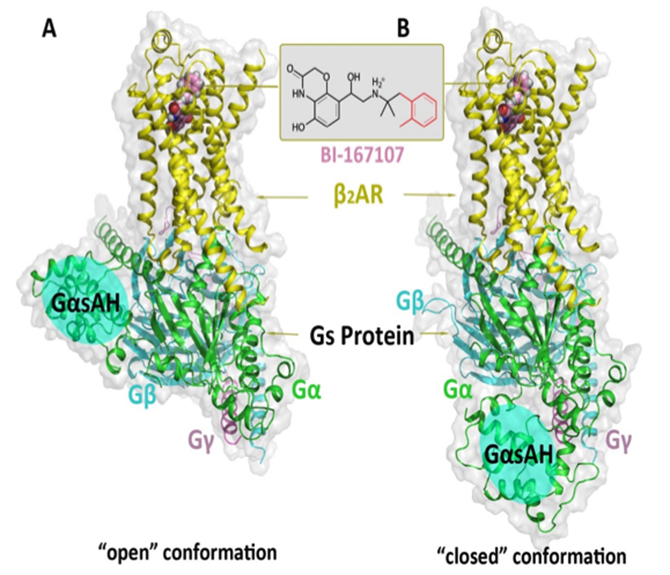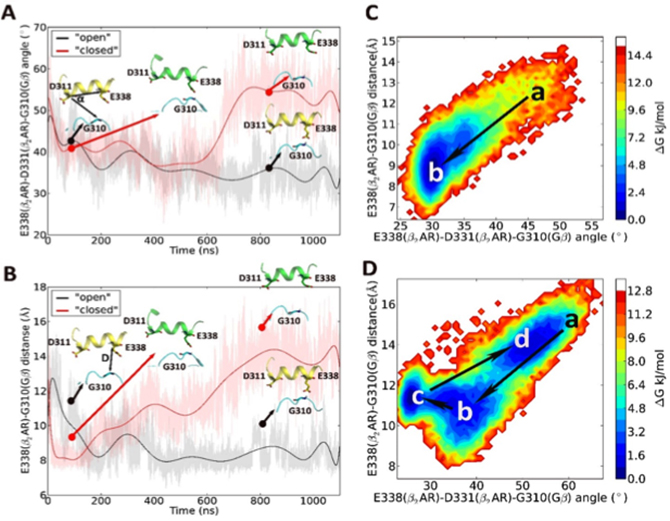Modelling proteins and protein-drug interactions
KTH Theoretical Chemistry researchers set about saving lives by helping in the development of drugs for Parkinson's disease and other illnesses.
by Yaoquan Tu, Xianqiang Sun, Xu Wang, Guangli Kuang and Zhengzhong Kong, KTH Department of Theoretical Chemistry
Cancer? Parkinson’s disease? Diabetes? Heart disease? None of us want to suffer from diseases like these. Researchers are working hard to develop drugs to treat such diseases effectively. The study of G-protein-coupled-receptors (GPCRs) is one area that offers hope for developing new drugs to treat various diseases.
GPCRs are a type of protein, known as membrane proteins, that occur all over our bodies - they exist in the membranes of our cells and change the way that each cell responds to stimuli from outside the cell. GPCRs are closely related to the occurrence, development, and treatment of many illnesses, such as immune disorders, infectious diseases, neurological conditions and psychiatric disorders, as well as diabetes, heart disease and cancer. Drugs that alter the activity of GPCRs in the body are already being used in the treatment of various diseases. (In the biomedical world they say that a drug that affects a GPCR in this way is “targeting” the GPCR.) In fact, the world’s top twenty best-selling drugs are ones that target GPCRs, and those twenty drugs have an annual total sales value of around 200 billion US dollars!
Yaoquan Tu and his doctoral students at the KTH Department of Theoretical Chemistry have been using the supercomputers at PDC to model protein structures, as well as interactions between various proteins, and between proteins and drug molecules. Modelling protein structures is valuable as it helps us to predict protein structures that can be used for designing drugs, while the results from studies of protein-drug and protein-protein interactions are of great benefit in helping us to understand many biological processes in the body, and thus the resulting information can be used to develop new drugs to address serious illnesses.
One protein that Yaoquan’s group has been investigating is the beta-2 adrenergen receptor (also known as β2AR or B2AR). The B2AR protein is a GPCR that reacts with adrenaline to affect muscles or organs. Drugs that target B2AR can be used in the treatment of respiratory diseases, such as asthma. Recent studies have also shown that long-acting agonists targeting B2AR can have therapeutic potential in the treatment of neurodegenerative disorders, such as Parkinson’s disease. (Agonists are chemicals that bind to receptors and make them respond in a particular way.)
The diagrams illustrate a hypothesis that Yaoquan’s group is testing. They show a possible mechanism for the way in which a particular protein, known as the Gs protein, decouples (or disconnects) from the B2AR. Finding out how this process works is important for the design of drugs targeting GPCRs, as it is related to how signals propagate through the body at a cellular level, which in turn influences the effect that a drug will have on the human body.
Although this is, in a sense, one very small part of how the whole complex human body works, it is through the dedicated efforts of many biochemistry researchers around the world that we are gradually building up a better and better understanding of how our bodies work, and how various substances cause the effects that they have on us. Thus this kind of research is gradually leading us towards being able to treat illnesses in efficient ways with compounds that specifically address the problem, and influence as little else as possible. While we may not yet have complete cures for diseases like cancer, each little building block in our understanding that comes from research like this is bringing us closer and closer to such cures.
Uncoupling of the Gs protein from the Beta2 adrenergen receptor

